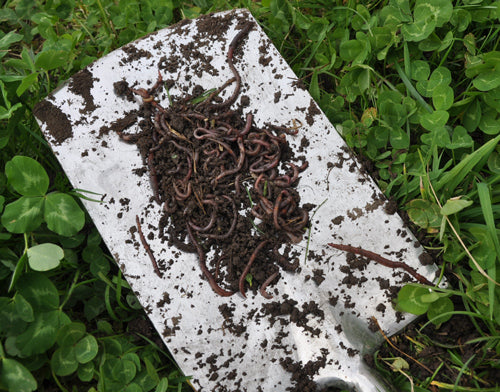The 5-Minute Rule for North Carolina Worms
Table of ContentsHow North Carolina Worms can Save You Time, Stress, and Money.Unknown Facts About North Carolina WormsThe North Carolina Worms PDFsThe 10-Second Trick For North Carolina Worms
Instance: 1-gallon of worm castings to 4 gallons of potting mix. 1/2 mug in the bottom of the growing hole for smaller sized plants. 1 mug for larger plants.
The enhancement of tea can additionally add boosted microbial biomass to your soil. You can constantly side-dress your plants with worm spreadings at any moment. Just remember, the microbes will die if revealed to UV rays (Sunlight), so be sure to cover the spreadings with an inch approximately of dirt.
This baffled them for years up until the testing techniques came to be better. It would certainly get much better(with even more spreadings), degree off, and then decline. Too lots of worm castings would certainly increase the growth to a rate that the plant could not recover from.
8 Simple Techniques For North Carolina Worms
Lots of herbicides function on this exact same concept. So, 20% by volume appears to be the "Sweet Area". I have stated the merits of worm spreadings for concerning 2000 words. What concerning the opposite of the coin? Absolutely nothing is perfect. Worm castings are no different. It takes time to create high quality worm spreadings.
Worm castings absolutely set you back even more than chemical fertilizers. Worm castings are on the cheaper end of natural plant foods. (50 gallons per year) It is a much tougher and extremely expensive financial investment to create big amounts of worm spreadings.

Creating a healthy soil may be the biggest benefit of worm castings. We talked about worm spreadings NPK and likewise the proper nutrient analysis that must apply to worm spreadings.
North Carolina Worms Can Be Fun For Everyone
We chatted about some of the downsides linked with worm spreadings. I covered a whole lot of material in this post.
The upright burrows are generally open, although the worms top the top with residue and waste matter. Roots require oxygen for their growth, whereas they create carbon dioxide that needs to leave the dirt.
Earthworms increase porosity by 2 devices: (1) by developing irreversible burrows, and (2) by boosting dirt aggregation. Aggregation is improved by the mixing of soil and organic issue in the earthworms' intestines. Lake James Bait. These extremely steady aggregates are transferred by some earthworms in their burrows, and by others at the surface area of the soil


In an additional study, earthworms were estimated to take in 4 to 10 percent of the leading 6 inches of the dirt annually. This only goes to reveal the huge amounts of soil that can be processed by earthworms. Soil compaction minimizes the porosity of the dirt. Because earthworms enhance porosity, they lower the results of compaction.
The Buzz on North Carolina Worms
Typical earthworm populaces can conveniently take in 2 lots of dry issue per acre annually, partly digesting and mixing it with soil. The significance of earthworms to mix surface area deposit with dirt ends up being really clear in soils that do not have any type of earthworms. A lot of our Pennsylvania soils contend the very least some earthworms, and the impact of their complete absence, therefore, can not be kept in mind.
(https://www.youbiz.com/profile/northcarolinaworms/)In these soils, the formation of topsoil with affordable raw material content did not occur, leading to poor crop development. As soon as the reason was established, the government of the Netherlands started a project to present earthworms. After the intro of the earthworms, a dark topsoil layer was created, and plant development raised considerably.
They live mostly from partly decomposed natural matter that is currently integrated in the soil. These species ingest big quantities of dirt that they blend with absorbed plant deposit in their digestive tracts.
Their burrows stay open, although they cap the top with plant deposit that they pull to the entrance. These varieties consume considerable amounts of dirt that they combine with digested deposit in their digestive tracts. Their excrement is primarily transferred at the surface area of the soil. The nightcrawler Lumbricus terrestris is one of the most noticeable participant of this group.